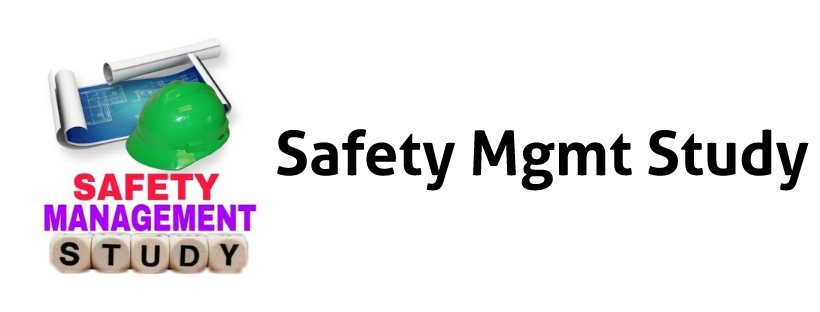Hazard Identification and Risk Assessment (HIRA) | Steps of HIRA.
Hazard identification and risk assessment, or HIRA, is a critical process that helps organizations and individuals identify potential hazards and assess the level of risk they pose. It is an important tool for ensuring workplace safety, as well as for mitigating risks in everyday life. In this blog post, we will provide a comprehensive guide to HIRA, including what it is, how it works, and why it is essential for any organization or individual looking to prevent accidents and injuries. We will also provide a downloadable document in doc/pdf format to help you get started with your own hazard identification and risk assessment process.
 |
| Hazard Identification and Risk Assessment (HIRA) | Steps of HIRA |
What is HIRA?
What is Hazard identification & risk assessment?
What are the steps of hira?
HIRA in Safety
What is HIRA in Safety?
What is Hazard Identification and Risk Assessment (HIRA)?
In the field of workplace safety, Hazard Identification and Risk Assessment (HIRA) is a crucial process that involves identifying potential hazards and assessing the associated risks. HIRA is used to determine the likelihood and potential impact of any particular hazard occurring in the workplace. The process of HIRA is essentially a way to proactively manage risks, as it enables organizations to take necessary steps to mitigate or eliminate potential hazards before they result in injury, illness, or property damage.
HIRA is a critical element of any safety management system and is often used in combination with other safety tools such as Job Safety Analysis (JSA) and Safety Audits. HIRA is commonly performed in a structured HIRA format to ensure a thorough analysis of the potential hazards and risks.
In summary, HIRA is a process of identifying and assessing potential hazards, assessing the risks associated with them, and developing and implementing control measures to mitigate those risks. The HIRA process helps organizations to identify, assess and control risks and prevent harm to employees and damage to property, equipment or the environment.
Importance of HIRA in workplace safety
Hazard Identification and Risk Assessment (HIRA) is an essential component of workplace safety management. HIRA in safety is a systematic approach used to identify potential hazards and evaluate associated risks in a given workplace. The HIRA format can help organizations identify and prioritize workplace risks to implement control measures to minimize potential injuries, accidents, and property damage.
HIRA is essential because it helps organizations identify, analyze and control potential workplace hazards. It plays a vital role in protecting workers, visitors, and property from harm and reducing organizational liability and reputational risk. It also helps organizations comply with safety and health regulations, reduce insurance costs, and enhance productivity.
The absence of an effective HIRA process can lead to a variety of negative outcomes, including worker injuries, equipment failure, workplace damage, loss of productivity, increased insurance premiums, and lawsuits.
A comprehensive HIRA process includes regular workplace inspections, job hazard analyses, accident investigations, and safety audits. It helps identify hazards before they cause accidents, which can lead to significant economic, environmental, and social losses.
By investing time, effort, and resources in HIRA, organizations can create a safer workplace for everyone and achieve a more sustainable future.
Steps in Hazard Identification and Risk Assessment
Now that we have a good understanding of what HIRA is and why it's so important, let's take a closer look at the steps involved in conducting a thorough HIRA process.
1. Conduct a Workplace Analysis
Before any hazard identification or risk assessment can be performed, it's essential to have a solid understanding of the workplace in question. This analysis should cover the physical space, the equipment and tools used, the processes and procedures followed, and the employees working in the area.
2. Identify Potential Hazards
With a clear understanding of the workplace, the next step is to identify all potential hazards. This can include everything from physical hazards like slippery floors or heavy machinery to chemical or biological hazards.
3. Assess the Risks
Once all potential hazards have been identified, the next step is to assess the risks associated with each. This involves looking at the likelihood and severity of each hazard and considering the potential consequences if an incident were to occur.
4. Develop Control Measures
With a clear understanding of the risks associated with each hazard, it's time to develop control measures to mitigate those risks. This can include anything from changing work processes or procedures to implementing engineering controls like barriers or ventilation systems.
5. Implement and Monitor Control Measures
Once control measures have been developed, they must be implemented and continually monitored to ensure their effectiveness. This can involve everything from employee training and communication to regular safety inspections and maintenance checks.
6. Continual Improvement through Periodic Review and Updating of HIRA
Finally, it's important to continually review and update the HIRA process to ensure that it remains effective over time. This can include periodic reviews of workplace conditions, employee feedback, and updates to regulations or industry standards.
It's also important to note that there is a standard HIRA format that can be used to guide the process. This format includes steps like defining the scope and purpose of the HIRA, identifying hazards, assessing risks, and developing control measures. By following a standardized format, it's easier to ensure that all necessary steps are taken and that nothing is overlooked.
In summary, HIRA is a crucial part of workplace safety that involves identifying potential hazards, assessing the risks associated with those hazards, and developing and implementing control measures to mitigate those risks. By following a standardized format and continually reviewing and updating the process, employers can ensure that their workplaces remain safe for employees over time.
What is HIRA?
What is Hazard identification & risk assessment?
What are the steps of hira?
HIRA in Safety
What is HIRA in Safety?


.jpg)









.png)

.png)

0 Comments